It’s great that the WTMC is looking after a Ruahine trap line to help protect blue duck from predators, and a visit had long been on my to-do list. I’m currently attempting to get fit for summer trips so I ambitiously signed up for Amanda’s Medium-Fit option. I emailed Amanda: “err…. I’m a wee bit out of shape…. Will it be on the easy end of medium-fit or the hard end…”? Thankfully, the medium and medium-fit trips were undersubscribed, so we decided to merge the trips into ‘more of a medium sort of medium-fit’. I felt reasonably happy I would be up to it. I then also became the sole punter on a trip with two leaders.
We started off with the easy group (see “Out Damn Stoat! A tale of stoat trapping in the Ruahines”), and slept at Sentry Box Hut on the Friday night. Our group rose early in the morning as we had a lot of ground to cover and we were on our way at just past 7 am. The ascent from Sentry box up over Rocky Knoll and to the Pohatuhaha trig is brutal first thing in the morning. “I hate it when you have to go straight up with no warm up” I winged. “The Ruahines may not be your friend”, Amanda replied.
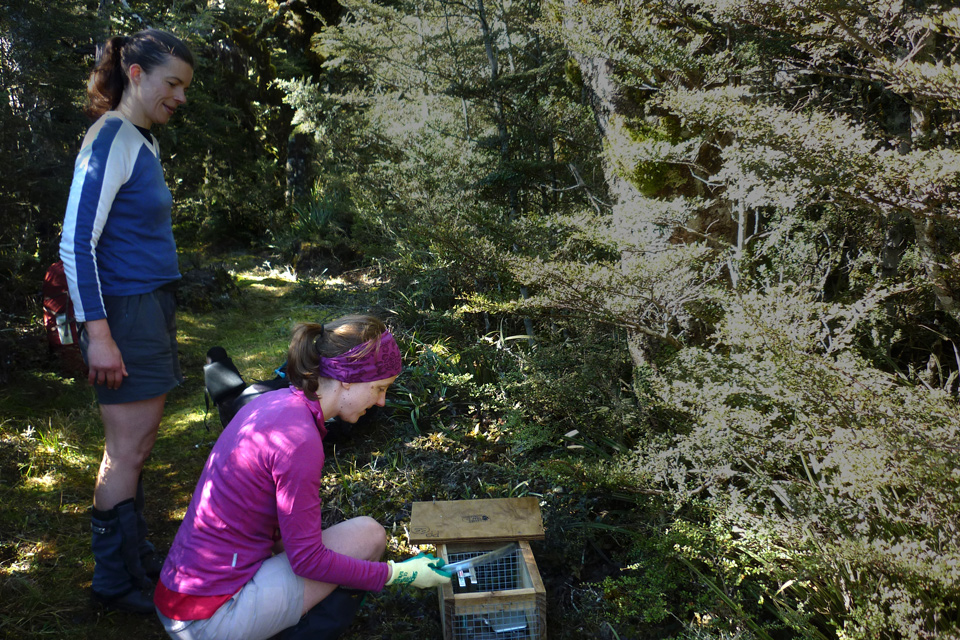
Once on the ridge, Amanda gave Debbie and me a trap setting tutorial. The procedure is: unscrew the lid, if unsprung spring the trap using the piece of hosepipe, place new bait, reset the trap, screw the lid back on and finally record the number. If the trap is sprung then the type of animal caught should be recorded and the very dead creature removed. In order to cover the whole line we split our group with Amanda heading to Parks Peak Hut and then on to Upper Makaroro, and Debbie and I heading the other way along the ridge towards Aranga Hut. The WTMC trap line joins up with ‘Geoff and Lisa’s’ trap line and the two lines completely encircle the valley where the blue duck live. Geoff and Lisa were unable to visit their line this weekend so we thought we would try to cover part of their line as well as our own. The plan was that the easy group would cover the section between Parks Peak Hut and the junction with the Aranga Hut track. Debbie and I would then cover the section from the junction with the Aranga Hut track to the top of Piopio. Amanda would walk to Upper Makororo and then cover the section from Upper Makaroro to Piopio where she would meet me and Debbie. Debbie, Amanda and I would then all walk back to Upper Makaroro together and be left with only the section from Upper Marororo back to Parks Peak Hut to cover on Sunday.
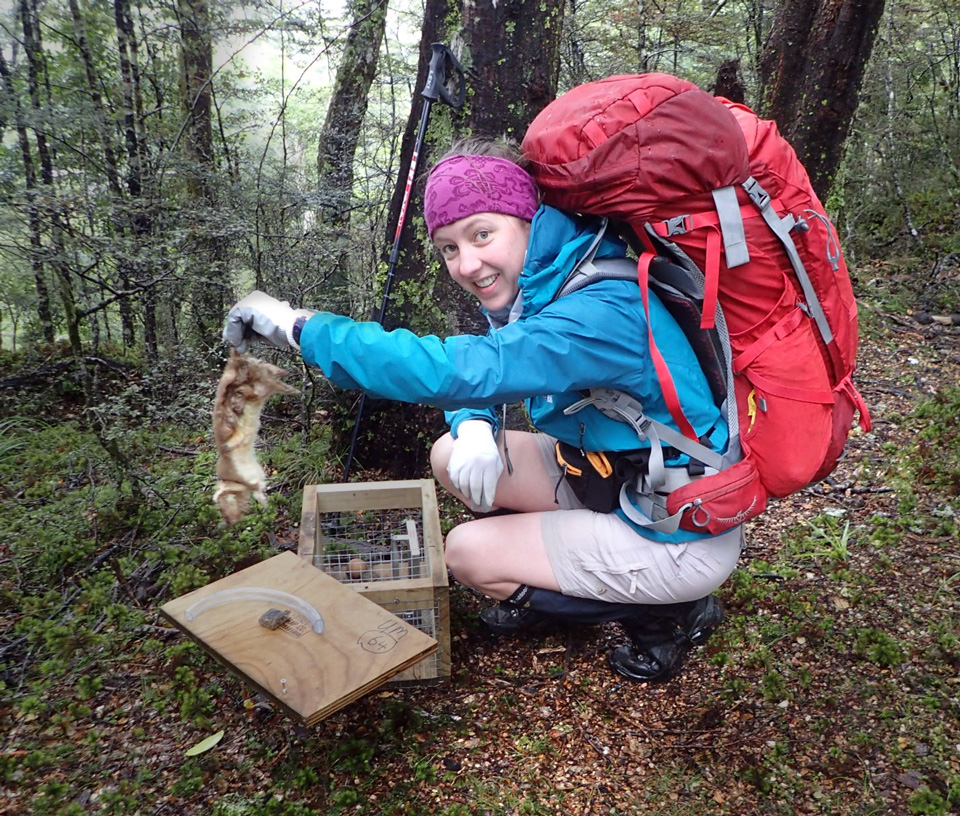
Debbie and I made good progress to the track junction, and then started our trapping. We quickly got into the swing of things, leap frogging each other as we attended to the traps so that we could cover the ground quickly. We had a target to get to Piopio to meet Amanda by 3 pm. It was great when we emerged out of the bush onto the wide tops and could take in the expansive views of Tongariro. Only one of the traps in this section had a stoat, but a lot had been sprung by the recent snowfalls, so it was good to get them all reset and ready to go. In general the track was fairly easy going and the traps easy to spot. There was just one section as we approached spot height 1396 that turned out to be a wee bit of bush bash – you just had to keep your eye out for pink tape attached to the trees.
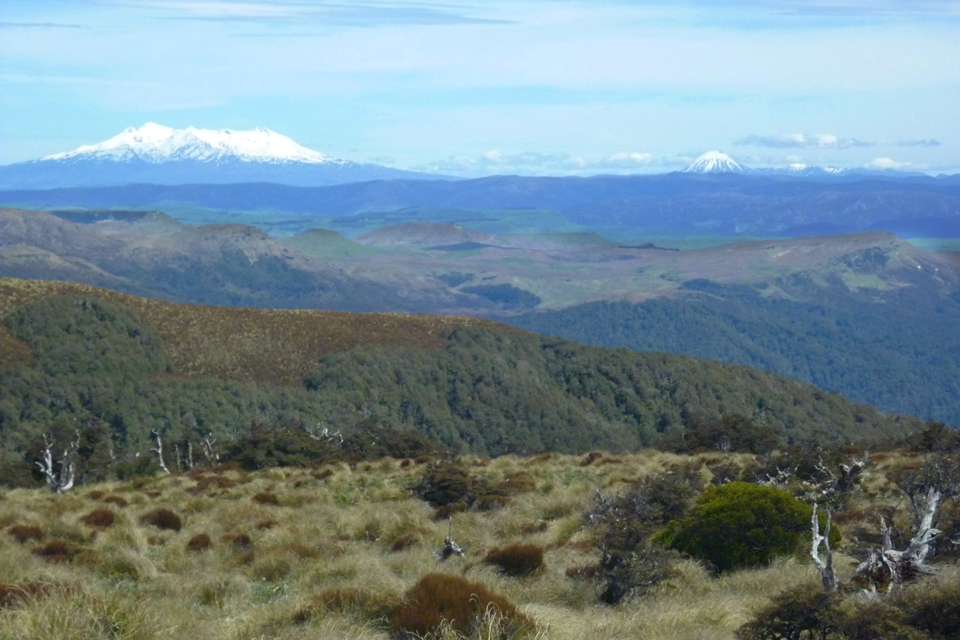
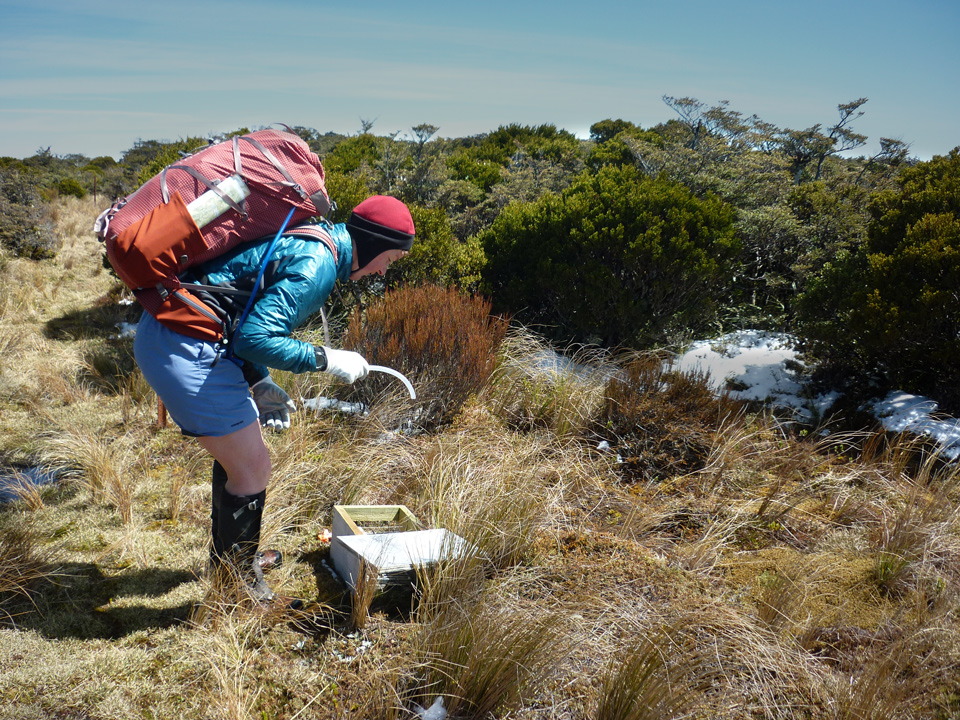
As we approached Piopio Debbie and I were starting to feel a little weary. “I hope we see Amanda soon”, we sighed. We were glad to have made our time target for 3 pm, but concerned as to whether Amanda would manage her section OK. Just as we stopped to take a break on the summit we spotted a lone figure among the tussock and were very relieved that our plan to meet up had worked so perfectly. Everyone was pretty tired, so we were glad we could regroup, didn’t have to do any more traps for the day and could just focus on getting to the hut. The descent down to Upper Mararoro is kind of steep, so I took my time while Amanda and Debbie raced ahead and got washed on the stream outside the hut. Upper Makaroro is a great little spot and we had a very pleasant evening listening for blue duck calls, enjoying our hearty dinner and some British chocolate biscuits to round it off (I’m sorry but no one does biscuits quite as well as the Brits!).
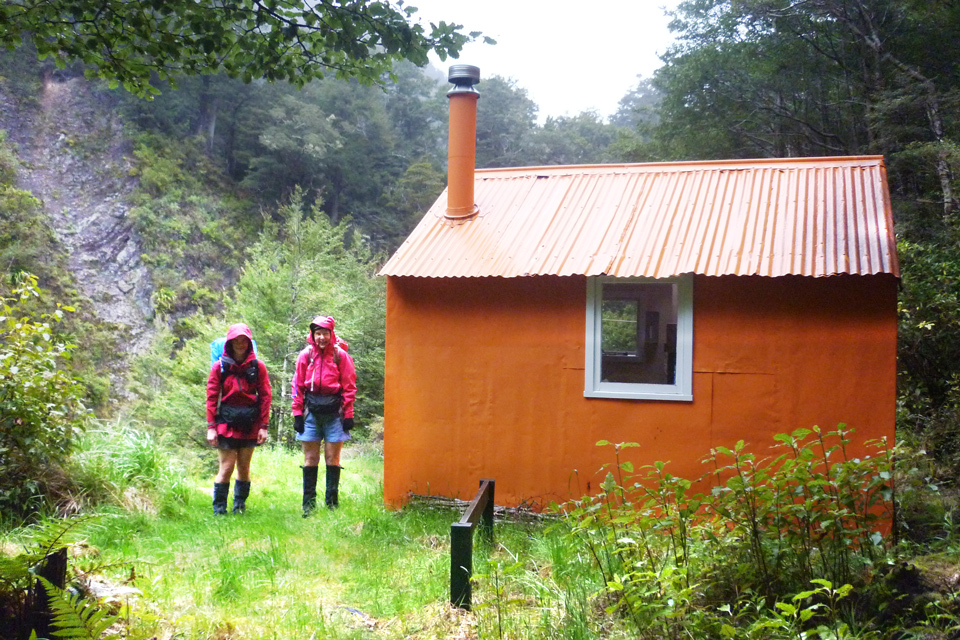
The forecast for Sunday had been less good, but thankfully the rain was not as bad as predicted. We waded the river and then made out way up to Parks Peak Hut. Attending to the traps give us some welcome breath stops on the steep ascent. We found a lot more stoats in the traps on this section than we had found on the tops the previous day. Once on the ridge we knew the easy group had covered all the traps, so we could just enjoy our walk down to Sentry Box and the van. We met the easy group about half way down and compared trapping notes.
This was a great trip in a beautiful area of the Ruahines. I’d really encourage WTMC members to get involved with this wonderful conservation project.

Just returned from Makaroro River. 15/12/2-15 -Checked the traps on the way out.. trap 77 a rat, 80. and 81 stoat, and along the top fpr 1 hour… 36 – fur,40 ferret or stoat, 46 long deceased animal, 51 stoat
Saw no blue duck one unusual shag flying up and down the river as we travelled from Barlow Hut to Upper Makaroro.